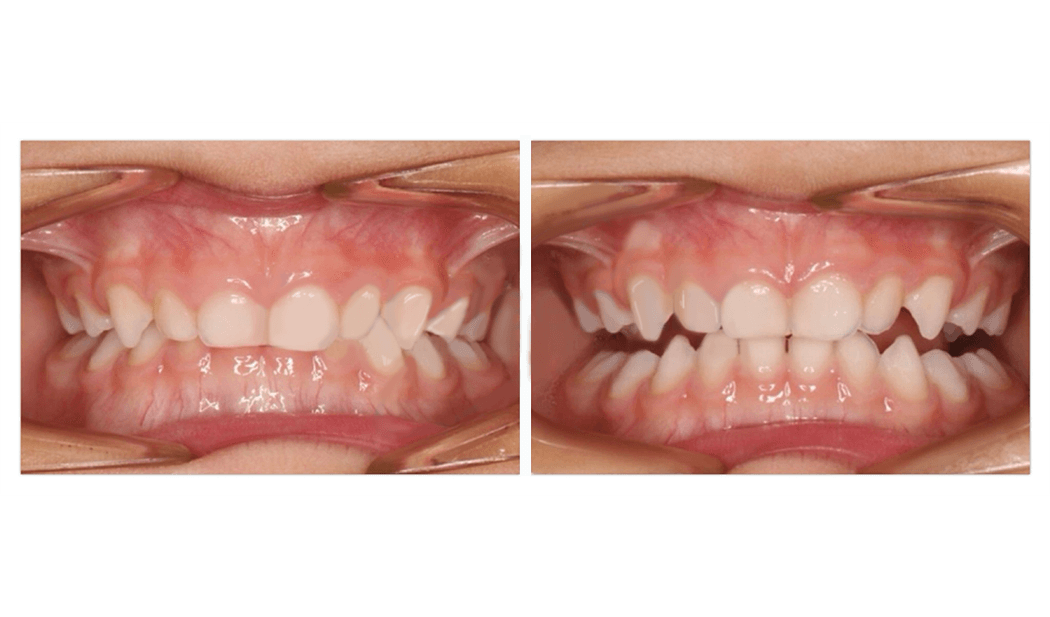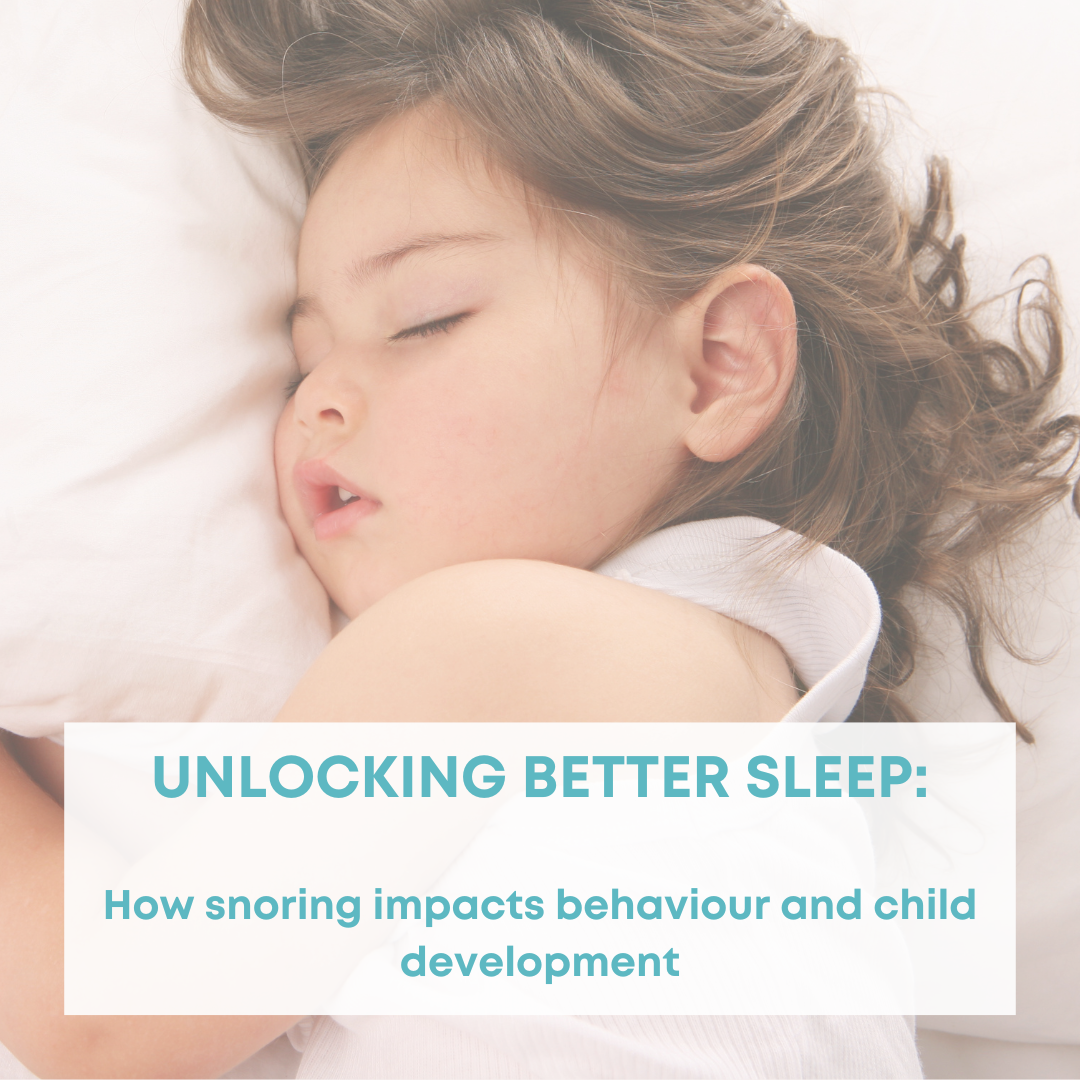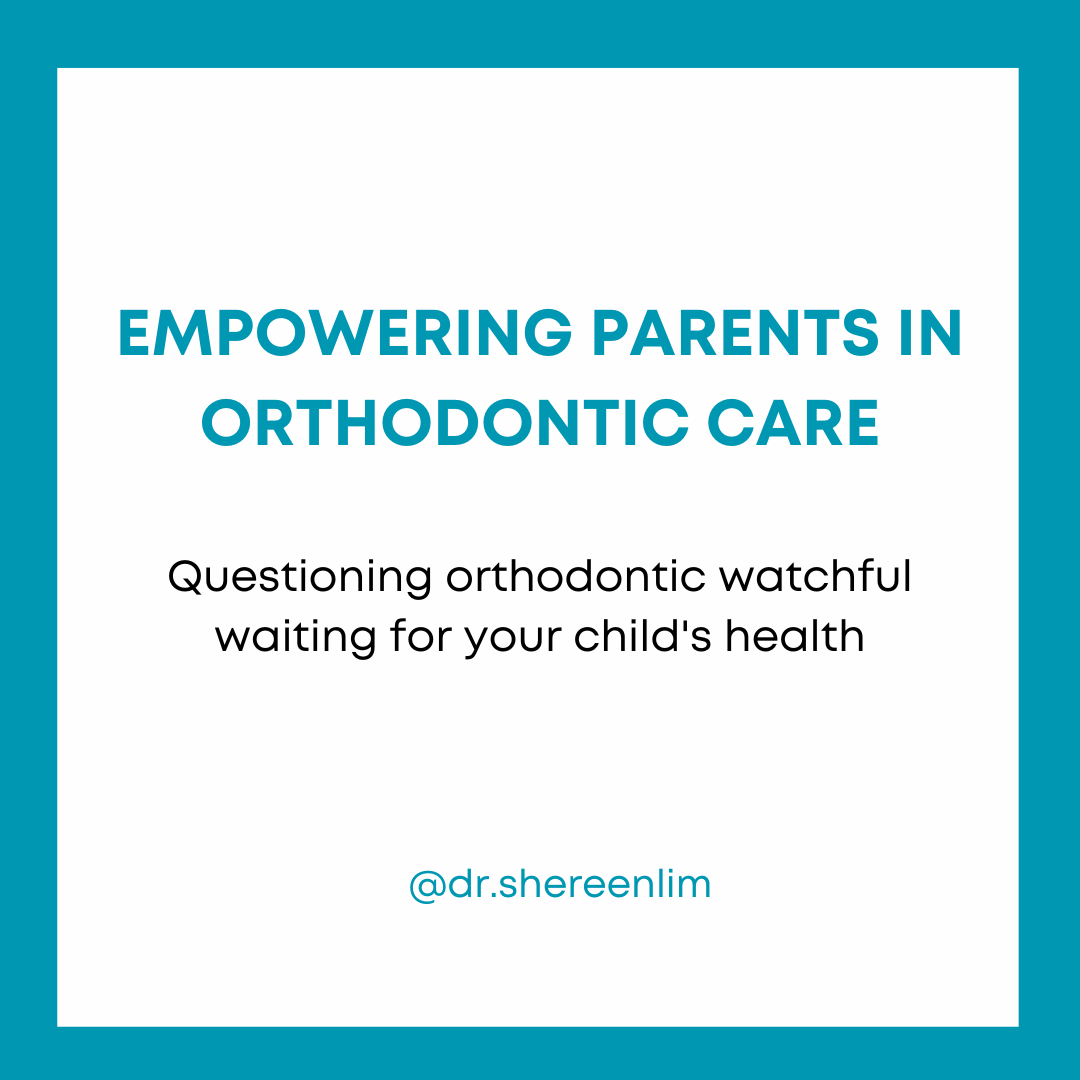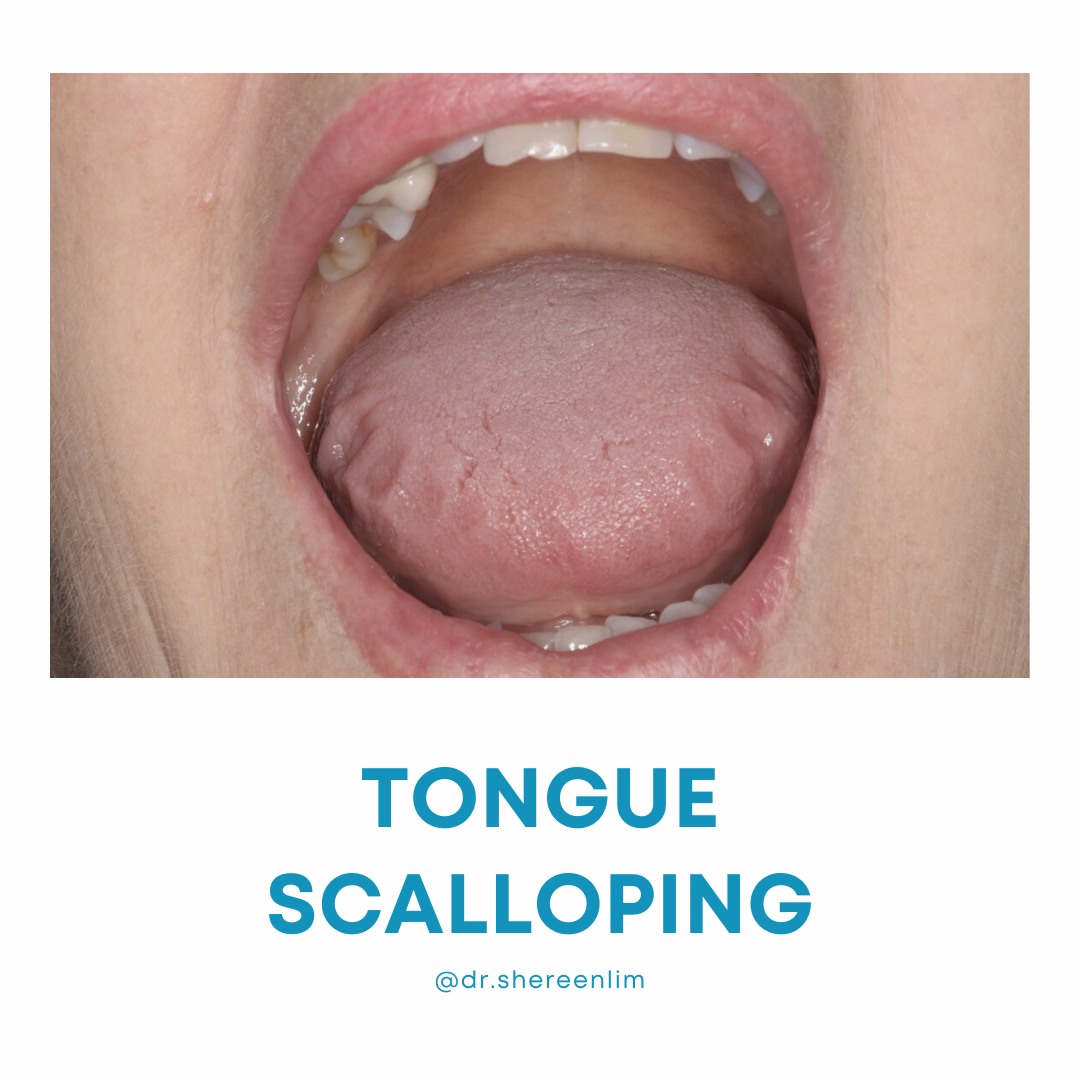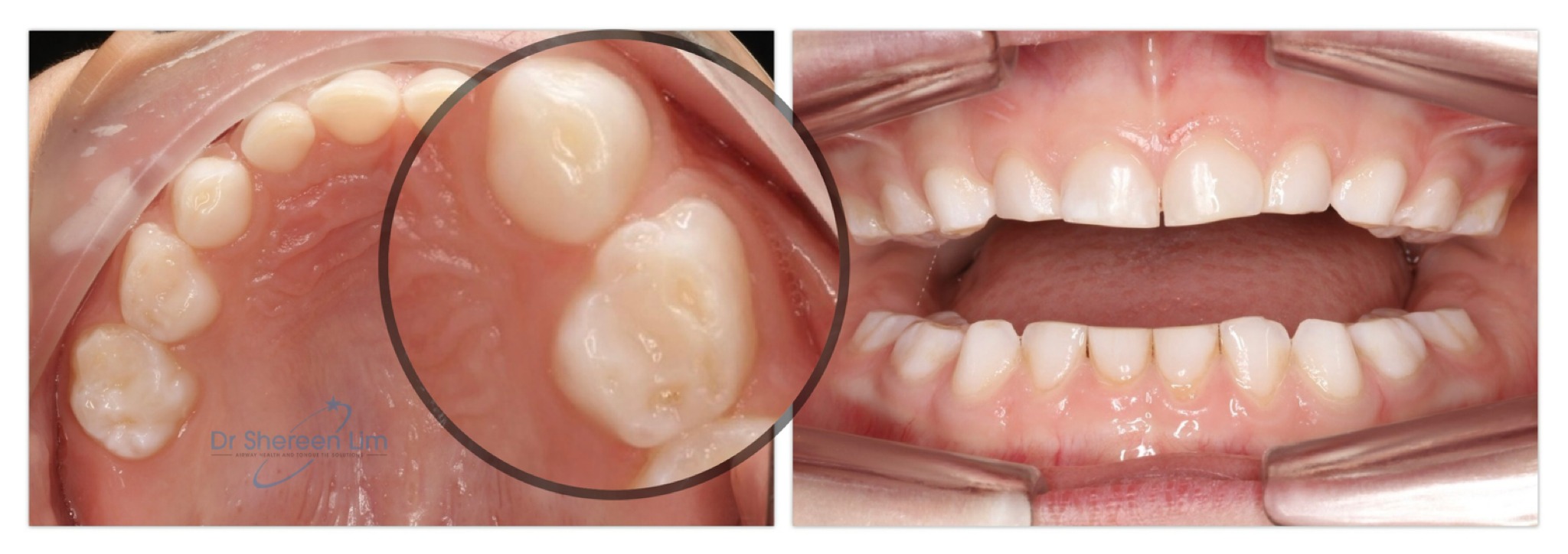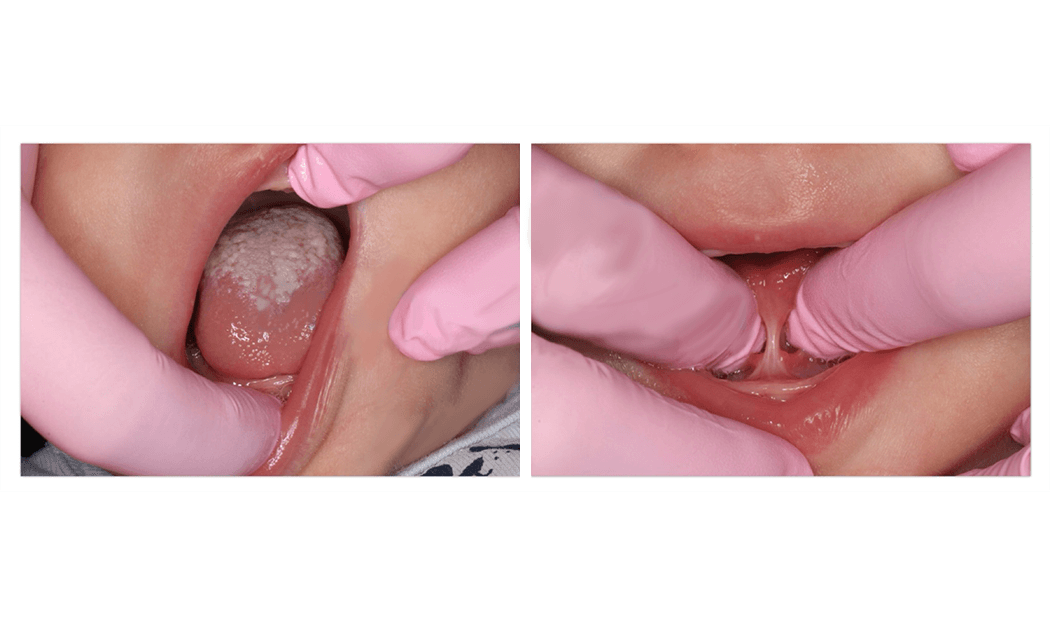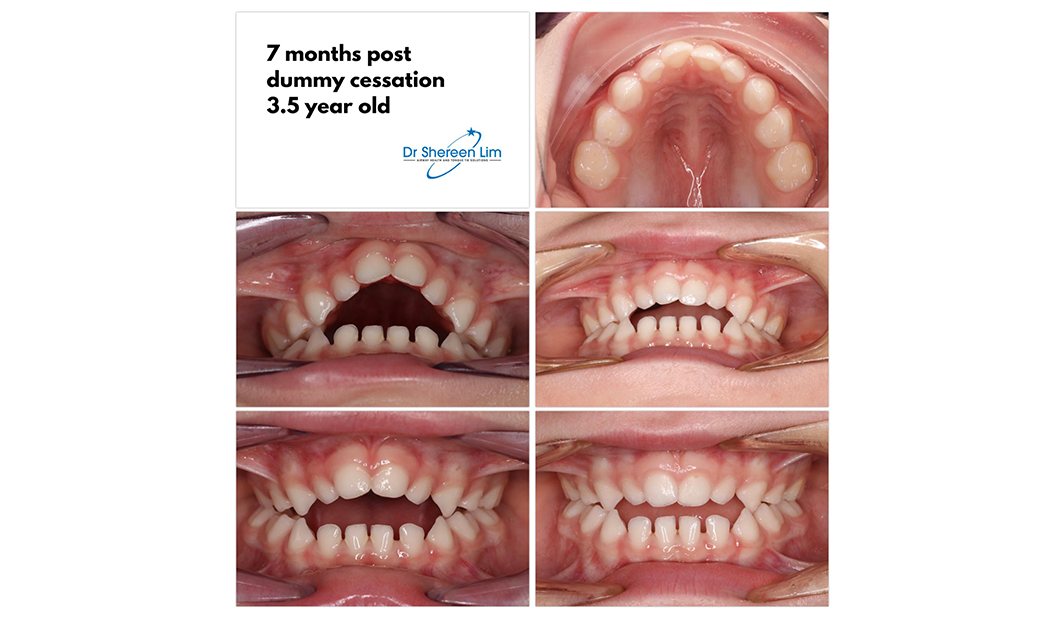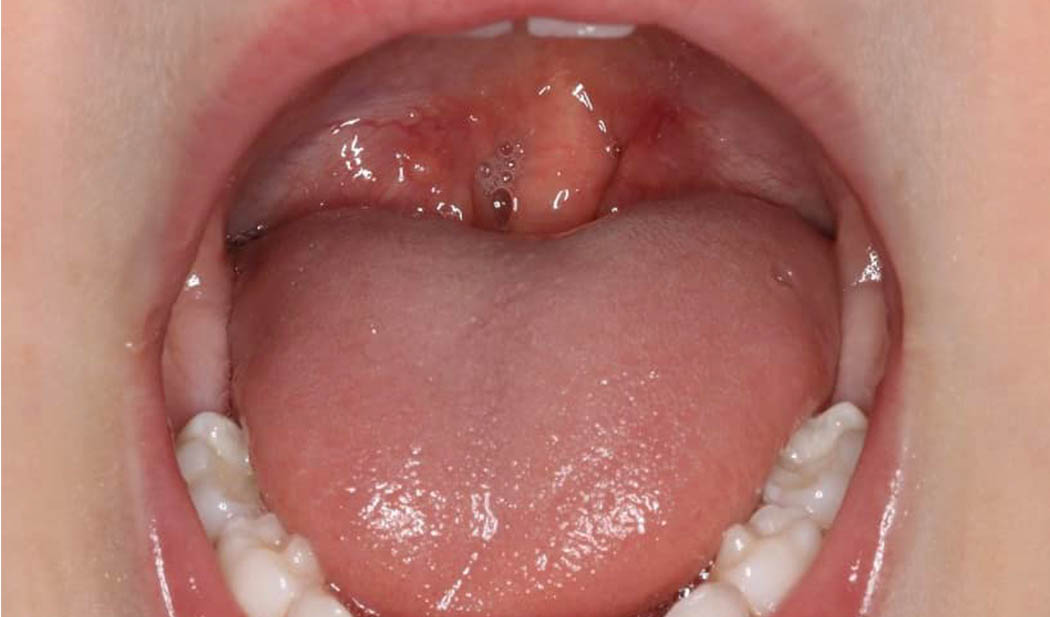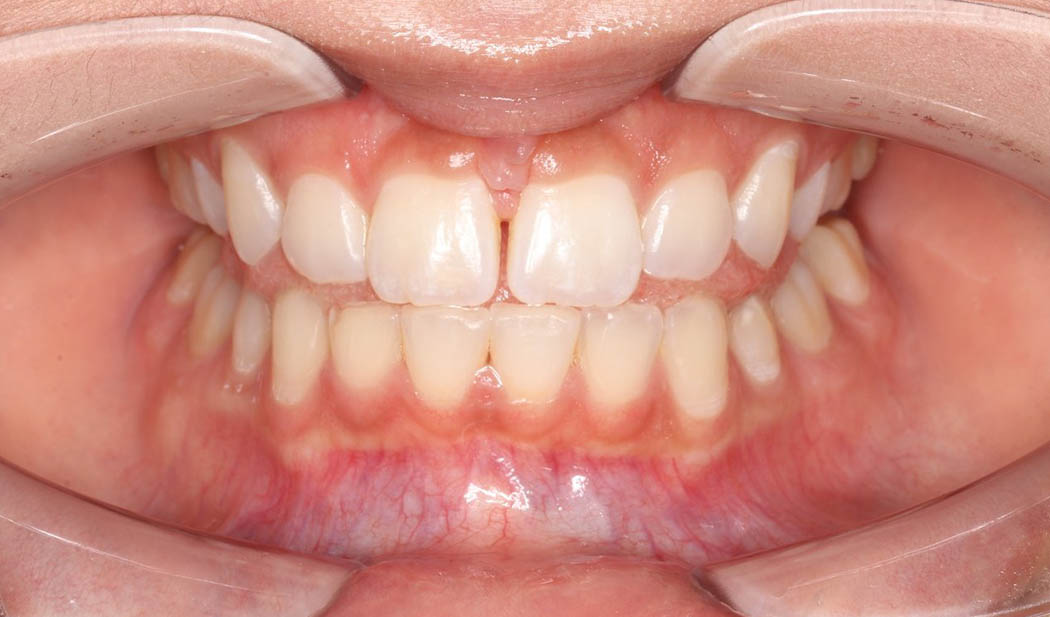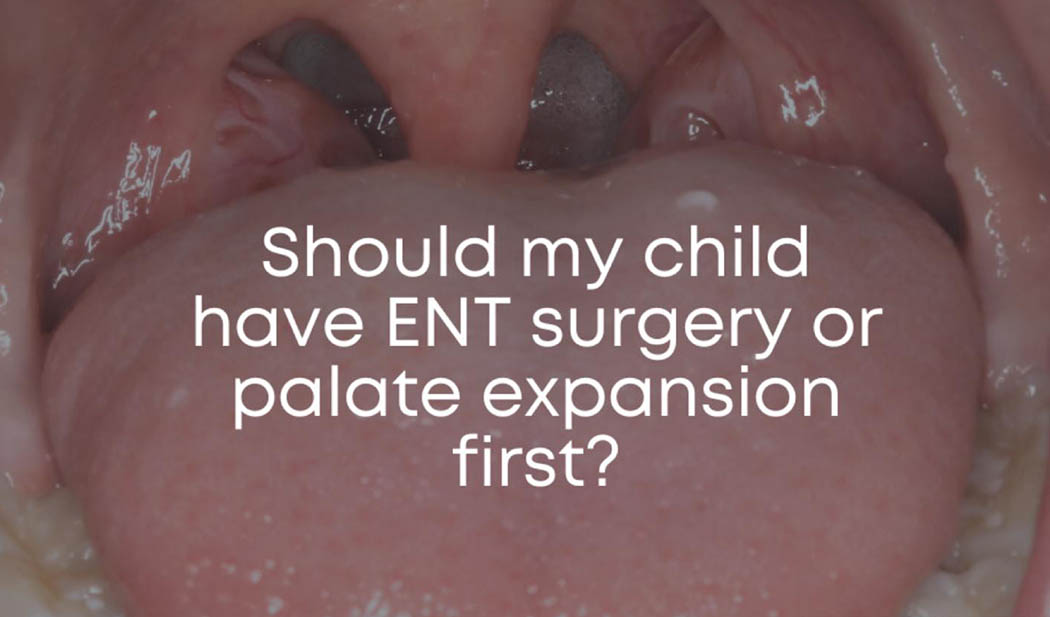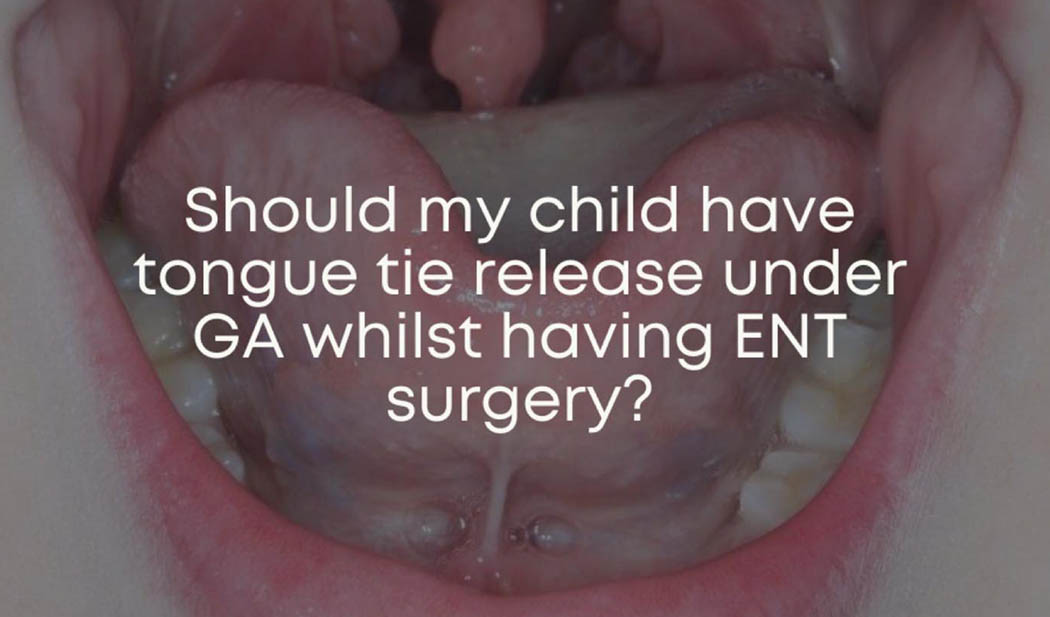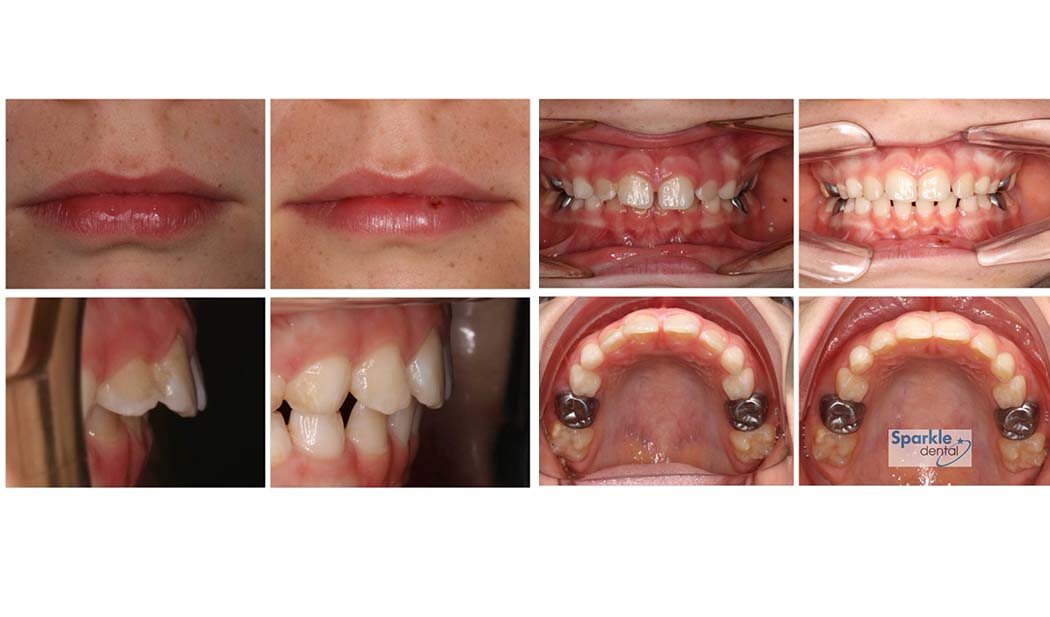A traumatic deep bite refers to when the upper front teeth completely vertically overlap the lower front teeth.
The lower front teeth impinge on the gum, and the lower jaw becomes trapped, preventing normal forward translation of the lower jaw during growth and development.
Traumatic deep bites are often associated with low posture of the base of the tongue.
Rather than resting lightly suctioned to the roof of the mouth, the back of the tongue rests low, spilling over the edges of the top and bottom back teeth. The space between the upper and lower back teeth in the second image approximates where the sides of the back of the tongue would occupy for a significant part of the day including night-time.
This tongue posture is also called a “lateral tongue thrust.” It may be associated with sloppy speech sounds in children, and increased risk of disturbed breathing during sleep.
Traumatic deep bites that persist in adulthood are linked to increased risk of jaw joint and muscle pain and dysfunction including some headaches.
Addressing deep bites during early childhood will often include tongue-strengthening exercises and ruling out posterior tongue ties that restrict normal elevation of the tongue to allow more optimal resting tongue posture.
Addressing constricted palates and tongue space is often another important piece of the puzzle. In this 3-year-old who presented with speech and sleep concerns, the lack of spacing between the baby teeth is a very strong red flag of constricted tongue space and severe dental crowding when the permanent teeth come through. Palate expansion will be a helpful intervention to promote both proper form and function.

